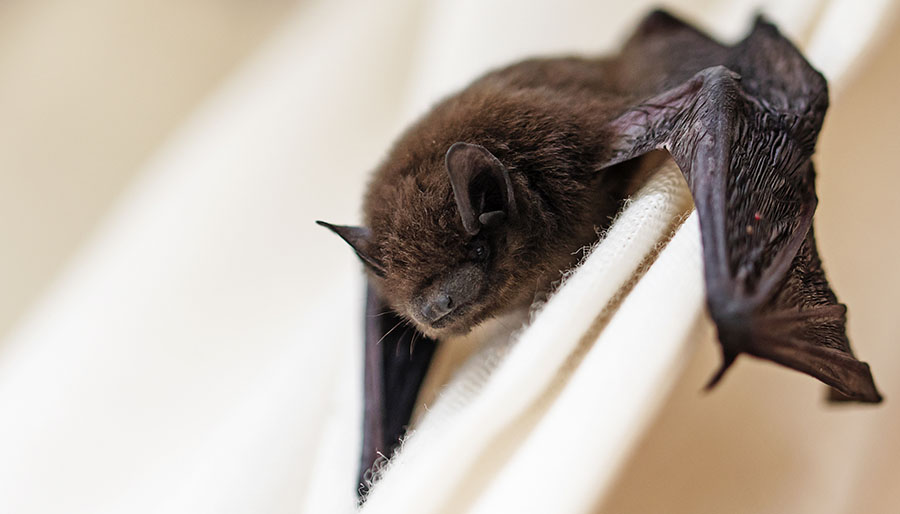It can be terrifying when your child wakes up to find a bat fluttering above his or her bed in the dark. It’s also surprisingly common in late summer as newly flying young bats find their way into cracks and crevices of old houses and then zoom unexpectedly into living spaces. But the most nerve-wracking part of this Halloween-esque scene can be assessing your child’s risk of rabies exposure.
Fortunately, most bats don’t carry the rabies virus and are unlikely to bite, but it’s important to be cautious about any potential exposure because of the deadly nature of rabies. The viral disease, which spreads through an infected animal’s saliva, attacks the central nervous system and causes inflammation in the brain and spinal cord. It is almost always fatal without timely administration of the rabies vaccine.
Here’s what to do if you or your child has been exposed to a bat in the house.
Assess your risk
Were you awake when the bat came into the room and are you positive no one in your house had contact? Then you’re probably fine skipping the vaccine. But the Centers for Disease Control and Prevention recommends precautionary treatment if a bat was in the room when you or someone you know was asleep, or if the bat was in a room with a young child or anyone else unable to confidently say whether or not they had contact with the animal. Although it’s estimated that only 2 to 6 percent of bats carry the virus, bats are the most common cause of human rabies in the United States. And it’s better to be safe.
If the bat is captured by you or a private service, it can be tested by your local health department for rabies. If the bat tests negative, there’s no need for rabies shots. Keep in mind that bats are a protected species in Wisconsin and shouldn’t be killed unless absolutely necessary for testing. If you’re certain there was no contact, you can simply open a door or window and let the bat fly out on its own. The Wisconsin Department of Natural Resources offers tips on how to catch or remove bats from your home.
Don’t assume and don’t wait
Don’t assume your child hasn’t been bit. Bats’ teeth are tiny. You may not even feel a bat’s bite, and the marks fade very quickly, making it extremely difficult to identify a bite after the fact. You can also get infected through a bat scratch if the animal’s saliva gets into the wound.
Don’t wait before seeking treatment. In the case of a known bite, immediately wash out the wound with soap and water and head to your local emergency room. Even if you’re not sure whether your child was bit, this isn’t a wait-and-see situation: by the time your child develops rabies symptoms, it’s almost always too late to reverse the disease. Although it can take weeks or months for rabies to develop, you should seek medical treatment as soon as possible after potential exposure. Your local hospital’s emergency room is the most likely place to stock the vaccine.
If your doctor decides it’s reasonable to administer the vaccine, your child will get multiple shots over four visits. On the first visit, he or she will get human rabies immune globulin (HRIG) to boost his or her antibodies and prevent a rabies infection, followed by an anti-rabies vaccine. He or she will then get three more vaccine doses on the third, seventh and 14th days after the first dose. Vaccine reactions are rare and usually mild. You may want to consider giving small rewards for each shot to make the process easier for your child.
Prevent future exposures
If you only see one bat, you may have a wayward flyer on your hands, or it could be a sign that bats are roosting in your attic, walls or another part of the house. A local pest management or wildlife control company can inspect your house and recommend a plan for bat-proofing to prevent future nighttime visits.







